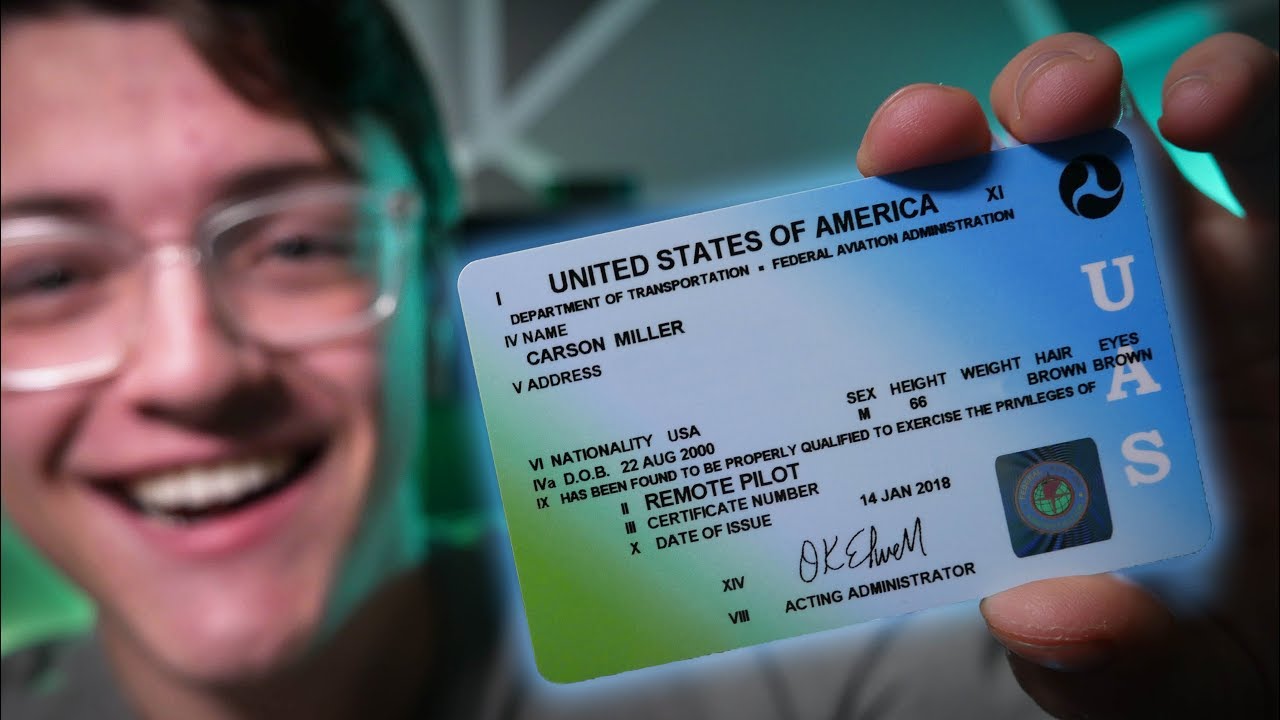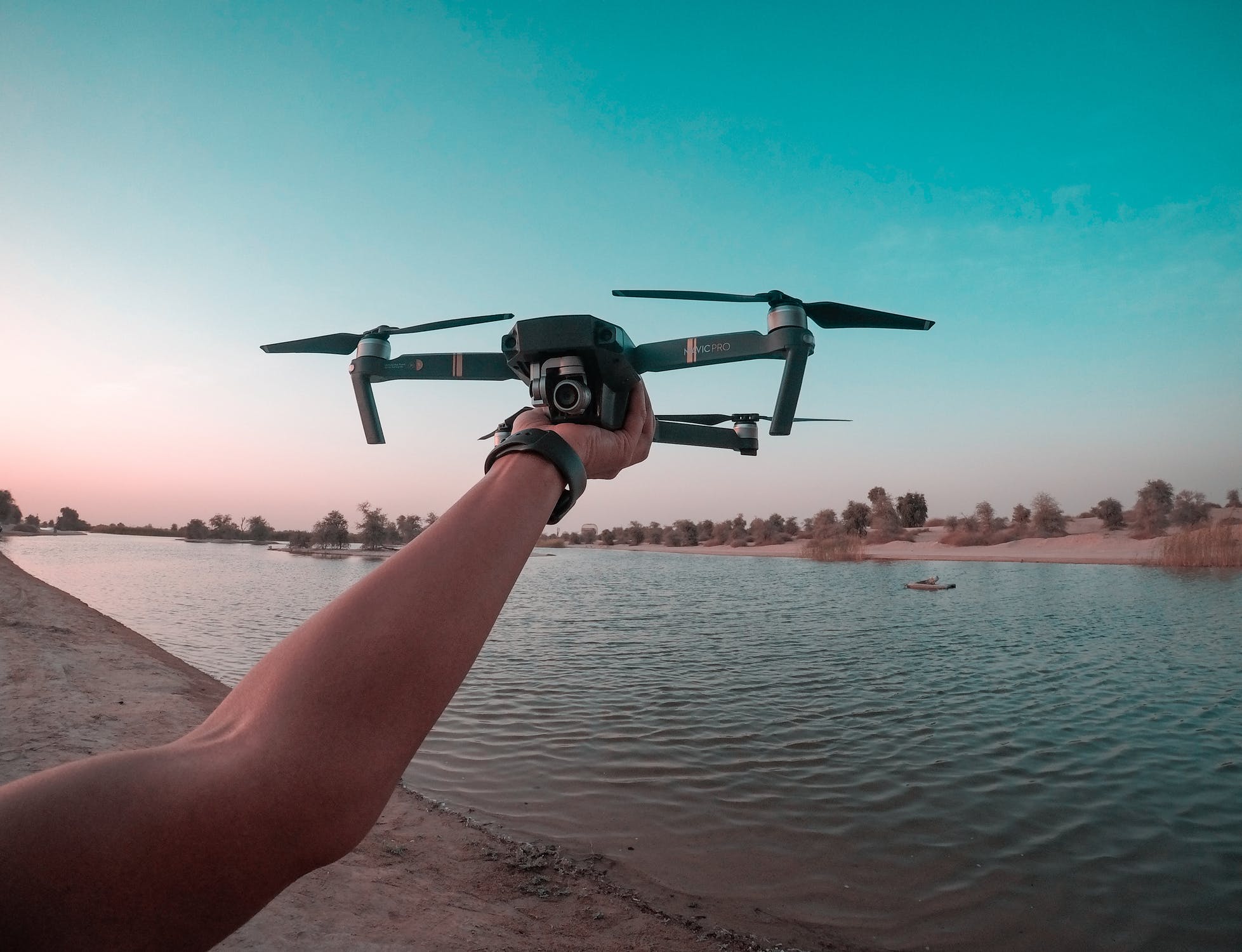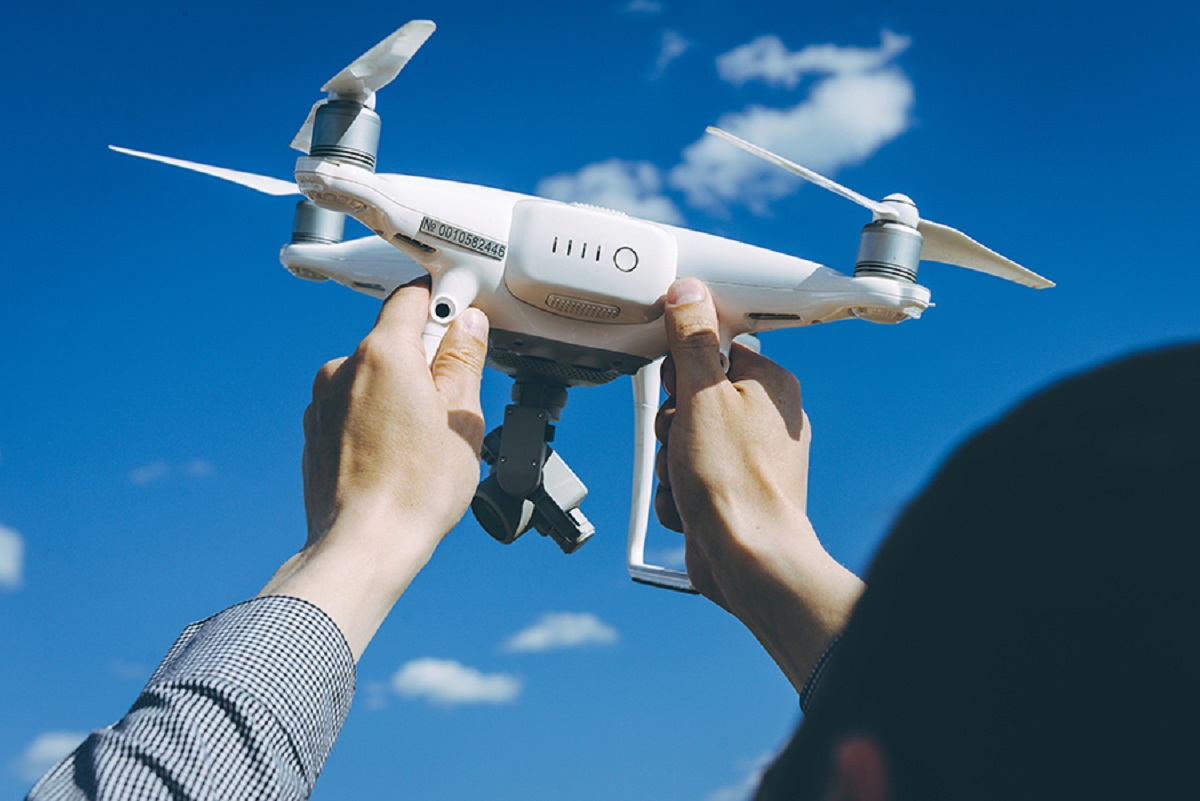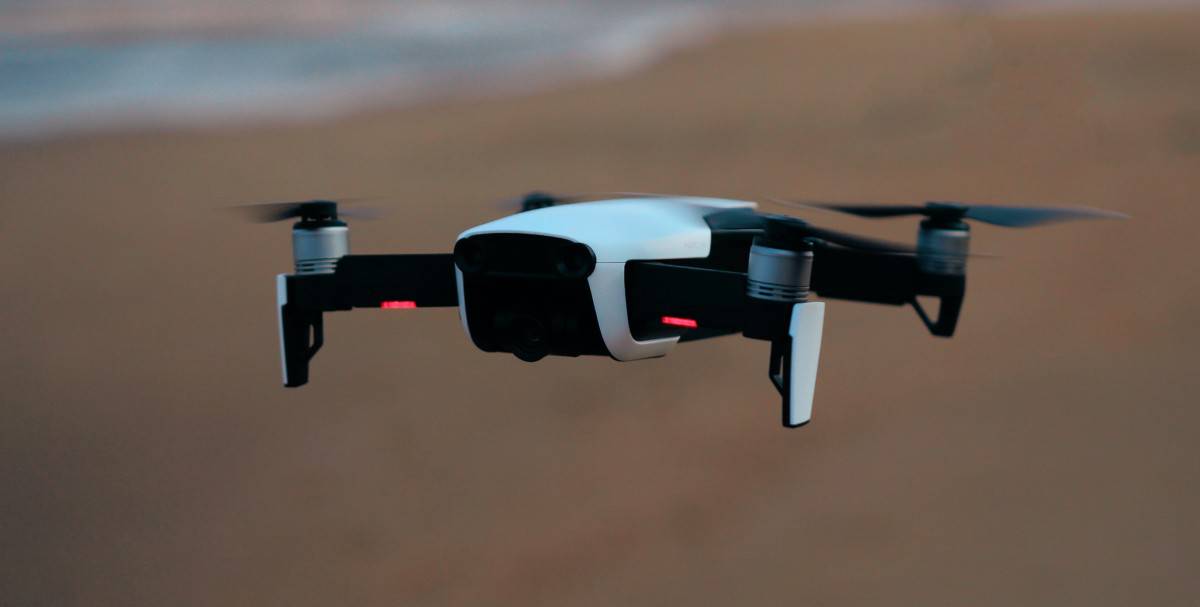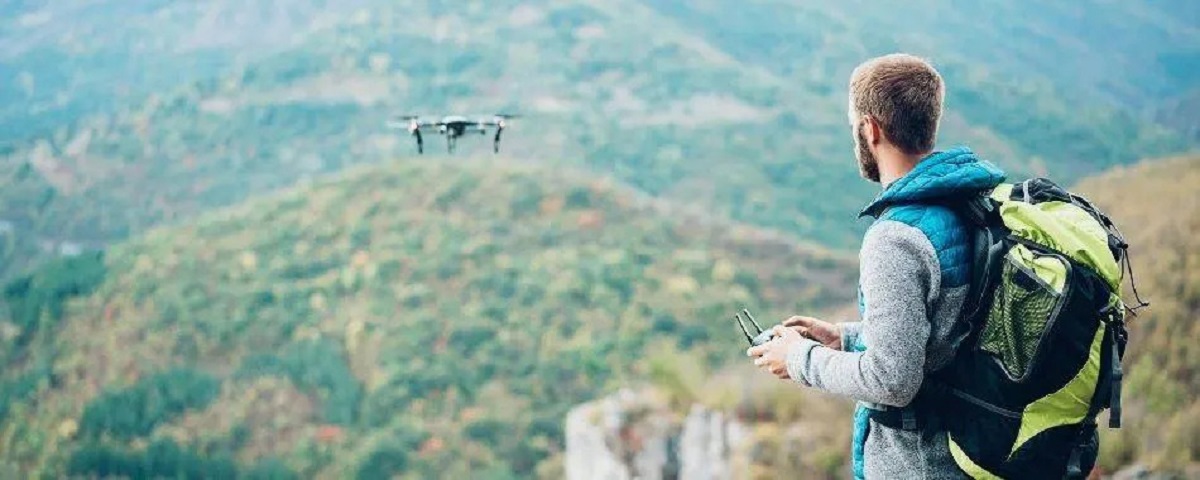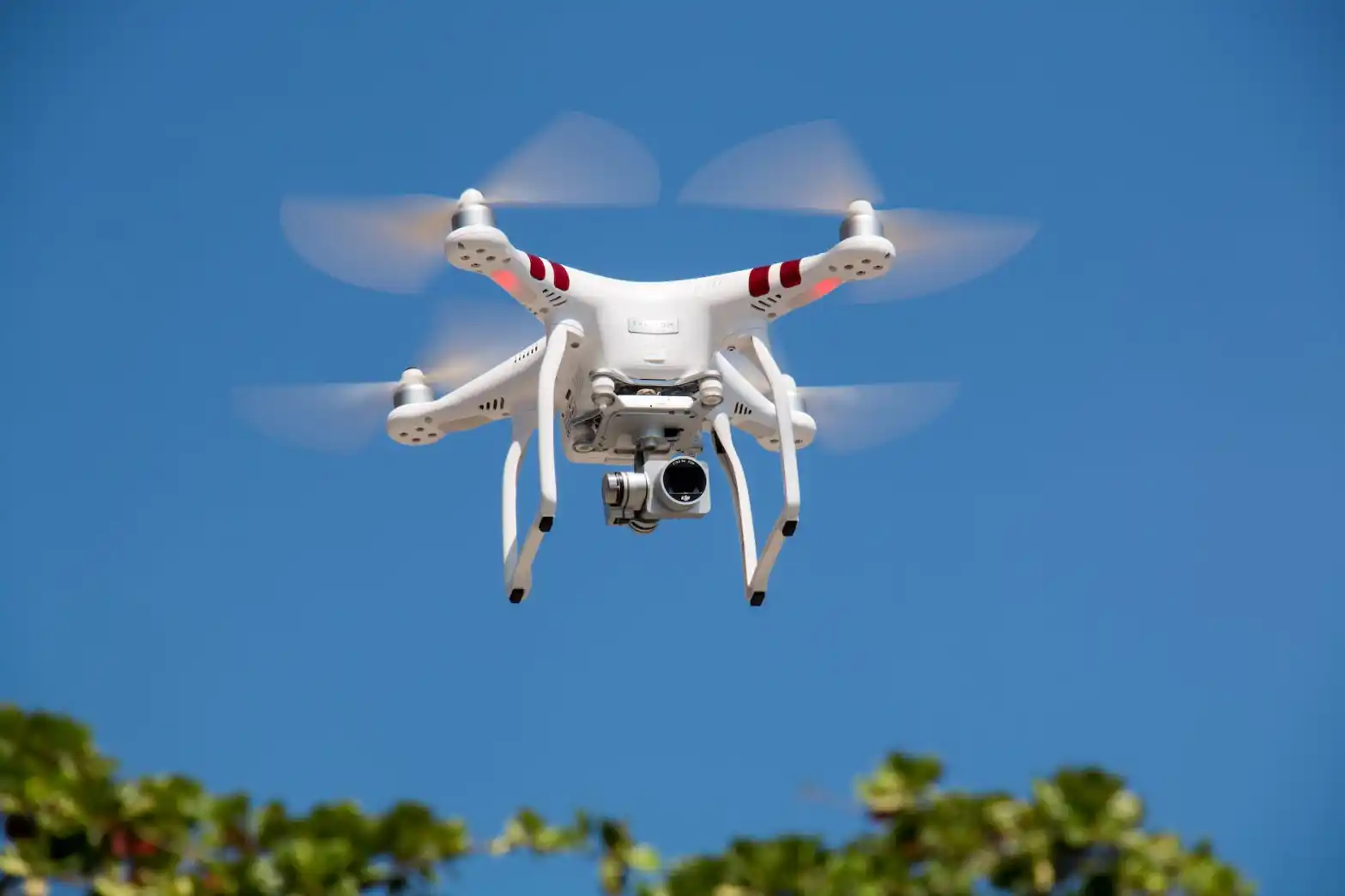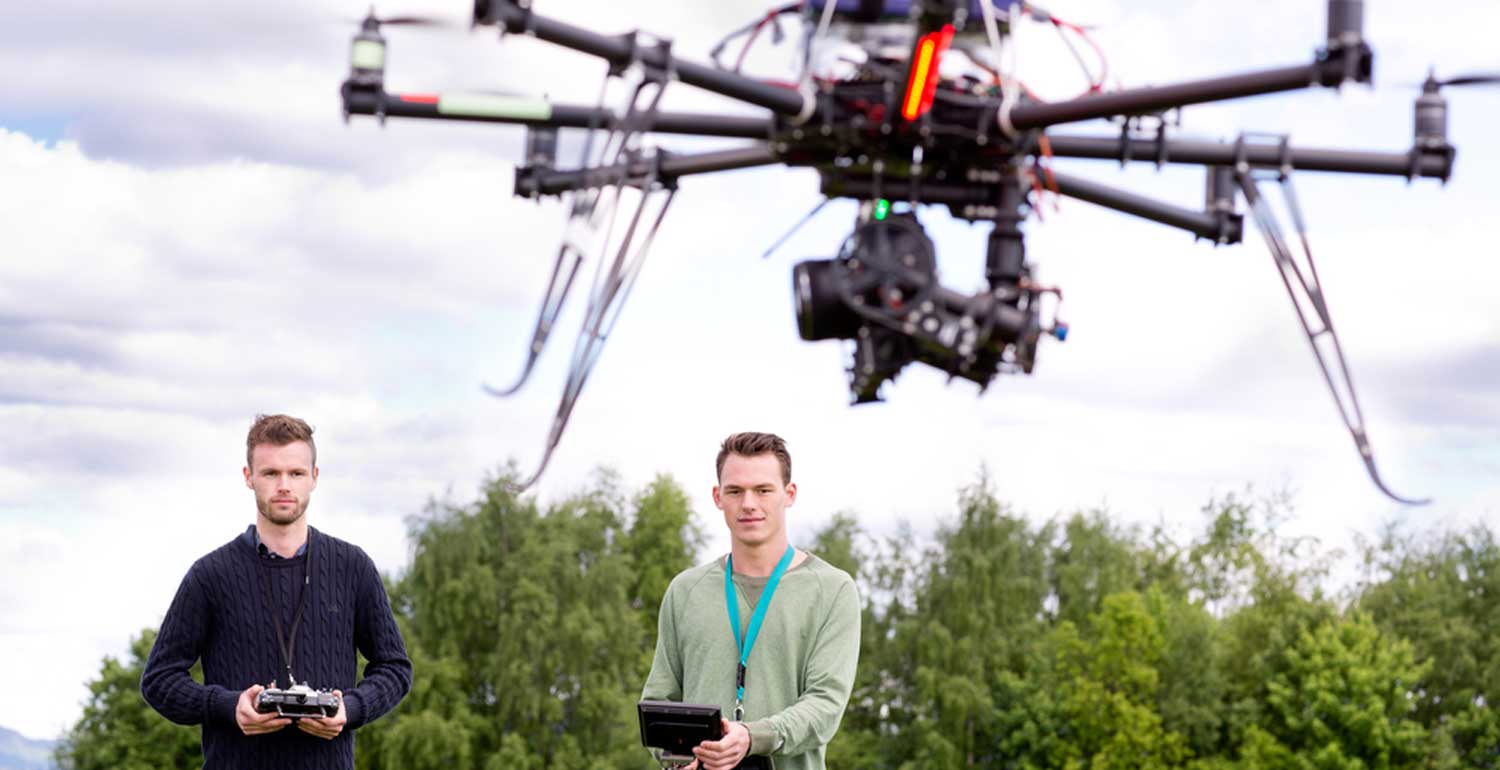Introduction
Drones, also known as unmanned aerial vehicles (UAVs), have revolutionized various industries with their unique capabilities. These small, remotely operated aircraft have gained immense popularity due to their versatility, efficiency, and cost-effectiveness. Initially developed for military purposes, drones have now found extensive applications in the commercial sector.
Drones have come a long way since their inception, evolving from rudimentary prototypes to sophisticated and technologically advanced devices. Their agility, maneuverability, and ability to navigate through challenging environments make them ideal for a wide range of commercial operations. From aerial photography and videography to surveying and inspection, commercial drones offer an innovative and efficient solution that surpasses traditional methods.
The use of drones in commercial settings has unleashed a plethora of possibilities across different industries. By providing aerial perspectives and data collection capabilities, drones enable businesses to streamline operations, enhance productivity, and reduce costs. From agriculture and construction to insurance and delivery services, the applications of commercial drones continue to expand rapidly.
In this article, we will delve into the world of commercial drone use, exploring its history, benefits, industries utilizing drones, real-world applications, as well as the challenges and regulations surrounding their operation. By providing a comprehensive understanding of commercial drone use, we hope to shed light on the potential and impact of this technology across various sectors.
Brief History of Drones
Although drones have gained widespread popularity in recent years, their history dates back several decades. The concept of unmanned aerial vehicles originated during the mid-20th century with the development of remote-controlled aircraft. However, it was not until the early 2000s that drones started to gain significant traction in both military and civilian applications.
The modern era of drones began with the launch of the General Atomics MQ-1 Predator by the U.S. Air Force in the 1990s. Initially intended for surveillance and reconnaissance purposes, the Predator became the first successful military drone, paving the way for future developments in unmanned aerial technology. The success of the Predator led to the creation of more advanced versions, such as the MQ-9 Reaper, which incorporated weapon systems.
With the escalating demand for drones, researchers and engineers started exploring their potential in the civilian sector. In 2010, DJI, a Chinese technology company, released the first consumer-oriented drone, the DJI Phantom. This marked a turning point in the drone industry, as it made aerial photography and videography accessible to the general public. The Phantom’s user-friendly interface and affordable price tag significantly expanded the market for drones.
In recent years, drones have seen remarkable advancements in technology, making them more efficient, capable, and affordable. Innovations such as improved battery life, obstacle detection sensors, advanced camera systems, and autonomous flight capabilities have propelled the commercial drone industry forward. Today, drones come in various sizes and configurations, catering to diverse needs and applications.
The evolution of drones is not limited to their physical attributes. Effective drone control and navigation systems have also played a vital role in their development. Ground-based control stations, GPS tracking, and real-time data transmission have made piloting drones safer and more precise. Additionally, the integration of artificial intelligence and machine learning algorithms has enabled drones to perform tasks autonomously, further expanding their applications in different industries.
Understanding Commercial Drone Use
Commercial drone use refers to the utilization of unmanned aerial vehicles in various industries to perform tasks that would typically require human intervention. These drones are equipped with cameras, sensors, and other specialized equipment, allowing them to collect data, capture images, and perform specific functions with precision and efficiency.
One key aspect of commercial drone use is their ability to access hard-to-reach or hazardous areas. Drones can navigate through tight spaces, fly at different altitudes, and withstand extreme weather conditions, making them ideal for inspections, surveillance, and data collection. They eliminate the need for manual labor in dangerous situations, reducing risks and ensuring worker safety.
Another advantage of commercial drones is their cost-effectiveness. Traditional methods of data collection or surveillance, such as manned aircraft or ground-based teams, can be expensive and time-consuming. Drones provide a more economical solution, as they require fewer resources, reduce labor costs, and can cover large areas quickly. This efficiency supports businesses in achieving faster turnaround times, increased productivity, and ultimately, higher profitability.
Furthermore, commercial drones offer the advantage of capturing aerial perspectives. They can provide a comprehensive view of the surroundings, enabling businesses to gain valuable insights and make informed decisions. Whether it’s for land surveying, agricultural monitoring, or infrastructure inspections, drones offer a level of detail and accuracy that is unmatched by traditional observation methods.
To harness the full potential of commercial drones, it is crucial to have skilled operators who can maneuver the aircraft effectively and interpret the data collected. Training programs and certifications are available to ensure safe and responsible drone operation. Additionally, advancements in drone software and automation technologies are simplifying the piloting process, making it more accessible to individuals with varying levels of expertise.
As the commercial drone industry continues to evolve, it is essential to understand the capabilities and limitations of these devices. It is important to recognize that while drones offer numerous benefits, they are not a one-size-fits-all solution. Each industry and use case requires careful consideration and customization to maximize the advantages offered by commercial drone use.
Benefits of Commercial Drone Use
The rise of commercial drone use has brought about numerous benefits across various industries. From increased efficiency to improved safety, drones offer a wide range of advantages that have revolutionized the way businesses operate. Let’s explore some of the key benefits of utilizing drones in commercial settings.
First and foremost, commercial drones have significantly improved operational efficiency. Drones can perform tasks quickly and accurately, reducing the time and resources required for various operations. For example, in agriculture, drones equipped with advanced sensors and imaging technology can monitor crop health and identify potential issues, allowing farmers to take proactive measures. In construction, drones can survey sites, monitor progress, and provide real-time updates, enabling project managers to assess productivity and make informed decisions without time-consuming manual inspections.
Drones also enhance worker safety by eliminating the need for humans to perform risky tasks. In industries such as energy, oil and gas, or infrastructure inspection, sending workers into dangerous environments can be hazardous. Drones can be deployed to assess infrastructure integrity, detect leaks, or inspect pipelines, reducing the exposure of workers to potential hazards. Additionally, drones equipped with thermal cameras can facilitate search and rescue operations during emergencies, locating individuals in remote or inaccessible areas quickly and efficiently.
Furthermore, the use of commercial drones reduces costs associated with traditional methods of data collection or monitoring. The deployment of manned aircraft or ground-based teams for aerial surveys or inspections can be expensive and time-consuming. Drones offer a more cost-effective solution, requiring fewer resources and personnel. They can cover large areas efficiently, collect high-resolution images, and provide detailed data, optimizing resource allocation and reducing operational expenses.
Drones also provide valuable aerial insights and perspectives that were previously inaccessible. For industries such as real estate, aerial photography and videography captured by drones offer a unique way to showcase properties and attract potential buyers. In architecture and urban planning, drones can create 3D models or maps, aiding in project visualization or determining the impact of proposed developments on the environment. These aerial perspectives provide valuable information, facilitating better decision-making and improving communication among stakeholders.
Overall, the benefits of commercial drone use are vast and varied. Whether it’s enhancing operational efficiency, improving worker safety, reducing costs, or providing unique aerial perspectives, drones have transformed the way businesses operate in multiple industries. As technology continues to evolve, we can expect the rise of new applications and innovations that further enhance the advantages offered by commercial drones.
Industries Utilizing Commercial Drones
The integration of commercial drones has opened up a world of possibilities across various industries. The versatility and capabilities of drones make them valuable assets in streamlining operations, improving productivity, and gathering crucial data. Let’s explore some of the industries that have embraced the use of commercial drones.
1. Agriculture: The agricultural sector has greatly benefited from drone technology. Drones equipped with multispectral cameras can assess crop health, detect disease outbreaks, and monitor irrigation systems. This data allows farmers to optimize water and pesticide usage, leading to higher crop yields and reduced costs.
2. Construction and Real Estate: Drones have become invaluable tools in the construction and real estate industries. They can provide aerial surveys for construction site planning, monitor progress, and produce high-resolution images or videos for property marketing. Drones also aid in inspections, identifying structural issues or potential hazards, minimizing risks and ensuring compliance.
3. Infrastructure and Utilities: Drones play a significant role in inspecting infrastructure such as bridges, roads, and power lines. They can quickly and accurately assess structural integrity, identify maintenance needs, and locate faults. This proactive approach reduces downtime, lowers costs, and improves overall infrastructure safety.
4. Insurance: Insurance companies utilize drones for claim assessments and risk analysis. Drones can gather detailed imagery of property damage or assess risk in hazardous areas. By reducing the need for physical inspections and providing accurate data, claims processing becomes faster and more efficient.
5. Environmental Conservation: Drones assist in environmental studies, wildlife monitoring, and conservation efforts. They can survey habitats, monitor animal populations, and detect illegal activities such as poaching or deforestation. Drones play a crucial role in data collection for research and conservation planning, contributing to the preservation of our ecosystems.
6. Delivery and Logistics: In the rapidly expanding e-commerce industry, drones have the potential to revolutionize last-mile delivery. With the ability to bypass traffic congestion and deliver packages to remote locations, drones offer a faster and more efficient delivery option. Major companies are exploring drone delivery services to improve customer satisfaction and reduce delivery costs.
These are just a few examples of industries that have embraced the use of commercial drones. However, the applications of drones continue to expand as technology advances. From search and rescue operations to mining, surveying, and disaster management, drones are transforming traditional approaches and enabling businesses to operate more effectively in a wide range of sectors.
Examples of Commercial Drone Applications
The applications of commercial drones are vast and diverse, offering innovative solutions to various industries. Let’s explore some real-world examples of how drones are being used in commercial settings to drive efficiency, improve safety, and enhance productivity.
1. Aerial Photography and Videography: Drones equipped with high-resolution cameras have revolutionized the photography and filmmaking industry. They can capture stunning aerial shots for movies, advertisements, and promotional videos. Drones provide filmmakers and photographers with unique perspectives and angles that were previously only achievable with expensive equipment or helicopter rentals.
2. Infrastructure Inspection: Drones are being utilized to inspect critical infrastructure such as bridges, towers, and pipelines. They can capture detailed imagery and thermal data, identifying structural issues, corrosion, or leaks. Drones eliminate the need for manual inspections, reducing risks and minimizing disruption to operations.
3. Agricultural Monitoring: In agriculture, drones equipped with multispectral cameras and sensors can monitor crop health, identify irrigation needs, and detect pest infestations. This data helps farmers optimize water and fertilizer usage, reduce crop losses, and increase overall productivity.
4. Search and Rescue Operations: Drones equipped with thermal cameras and GPS capabilities are invaluable in search and rescue missions. They can quickly cover large areas, locate missing persons, and provide real-time information to rescue teams. This technology improves response times and increases the chances of successful rescues, especially in remote or hazardous environments.
5. Construction Site Monitoring: Drones are used to monitor construction sites, providing real-time updates on progress and identifying potential issues. They can help project managers track resource allocation, assess worker safety compliance, and improve overall efficiency. Drones enable proactive decision-making and reduce costly rework.
6. Delivery Services: Companies such as Amazon are exploring the use of drones for package delivery. Drones can efficiently transport small parcels to remote or inaccessible locations, reducing delivery times and costs. This technology has the potential to revolutionize the logistics industry, especially in rural areas.
These are just a few examples of the numerous applications of commercial drones. The versatility of drones allows businesses to adapt and customize their usage based on their specific needs. As technology continues to advance, we can expect even more innovative and impactful applications of drones in various industries.
Regulations and Challenges in Commercial Drone Use
As the commercial drone industry continues to grow, regulations are being put in place to ensure safe and responsible drone operations. These regulations aim to address concerns such as privacy, airspace congestion, and potential risks associated with drones. However, navigating through these regulations and overcoming the challenges they pose is a crucial aspect of using drones in commercial settings.
One of the main challenges in commercial drone use is adhering to airspace regulations. Drones must comply with specific altitude restrictions and stay clear of restricted areas such as airports or military installations. Pilots must also obtain appropriate licenses and certifications, demonstrating their knowledge of airspace regulations and safe piloting practices.
Privacy concerns are another challenge in the commercial use of drones. With their ability to capture high-resolution imagery and video, drones raise privacy issues when operating in public or private spaces. Striking a balance between capturing valuable data and respecting individuals’ privacy is of utmost importance. It is vital to comply with local and national laws related to data protection and privacy, ensuring that drone operations do not violate personal privacy rights.
Another significant challenge is ensuring the safety of both the drone operator and the general public. Pilots must have the necessary skills and knowledge to operate drones safely, avoiding collisions with other aircraft, buildings, or people. It is essential to follow best practices and abide by regulations related to visual line-of-sight requirements, flight restrictions in certain areas, and maintaining safe distances from people and property.
The rapidly evolving nature of drone technology often outpaces the development of regulations. Keeping up with changing laws and staying informed about new requirements can be a challenge for both businesses and drone operators. It is essential to stay updated and comply with any changes in regulations to ensure the legality and safety of commercial drone operations.
Furthermore, insurance coverage for commercial drone operations can be a challenge. Businesses must secure appropriate insurance that covers potential liabilities and loss or damage resulting from drone operations. Insurers are continually adapting their policies to address the specific risks associated with drones, but finding adequate coverage can still be a complex process.
Despite these challenges, the benefits of commercial drone use continue to drive innovation and advancements in the industry. As regulations become clearer, technologies improve, and training programs become more accessible, the commercial drone industry is expected to overcome these challenges and thrive in the future.
Future Outlook for Commercial Drone Use
The future of commercial drone use is filled with exciting possibilities as the technology continues to evolve and improve. Advancements in drone capabilities, software, and regulations are transforming industries and creating new opportunities for businesses. Here are some key aspects that indicate a promising and dynamic future for commercial drone use.
Technological Advancements: The future will bring even more advanced drones with improved flight performance, longer battery life, and enhanced payload capacities. From more compact and lightweight designs to the integration of artificial intelligence and machine learning algorithms, drones will become more intelligent and efficient in carrying out a wide range of tasks.
Industry-Specific Solutions: As technology and regulations mature, we can expect to see more industry-specific solutions tailored to the unique needs of various sectors. For example, agricultural drones may offer specialized sensors for precise crop monitoring, while inspection drones for oil and gas industries may have built-in gas detectors. These advancements will deliver more accurate data and insights, allowing businesses to make informed decisions and maximize efficiency.
Automation and Autonomy: The future will witness increased automation and autonomy in drone operations. With the integration of advanced sensors, artificial intelligence, and software algorithms, drones will be able to perform tasks autonomously, reducing the need for human intervention. Automated flights, object detection and avoidance capabilities, and real-time data analysis will enhance their efficiency and safety.
Expanded Applications: Commercial drones will find applications in industries that are currently untapped or have only scratched the surface. Sectors such as healthcare, disaster response, environmental conservation, and logistics are expected to further embrace drone technology. Drones will provide innovative solutions and support in various scenarios, from delivering medical supplies to remote areas, conducting rapid environmental assessments, to aiding in disaster management and search and rescue operations.
Improved Regulations: As the commercial drone industry matures, regulations will become more refined and adapted to the evolving technology. Governments and aviation authorities are working on developing comprehensive guidelines that strike a balance between safety, privacy, and innovation. Clearer regulations will bring certainty and clarity, enabling businesses to leverage the full potential of drones while operating within legal boundaries.
Collaborations and Partnerships: Collaboration among drone manufacturers, software developers, and businesses will play a crucial role in shaping the future of commercial drone use. Partnerships between different stakeholders will drive innovation and provide integrated solutions that cater to specific industry needs. With shared expertise and resources, collaborations will lead to the development of more advanced and specialized drone applications.
The future of commercial drone use is bright, with the technology set to revolutionize a wide range of industries. As drone capabilities mature, regulations adapt, and businesses embrace the opportunities, we can expect to see continued growth and widespread adoption of drones in various sectors, driving efficiency, safety, and productivity to new heights.
Conclusion
In conclusion, commercial drone use has emerged as a game-changer across numerous industries, offering a multitude of benefits and opportunities. From aerial photography and videography to infrastructure inspection, agriculture, and delivery services, drones have revolutionized the way businesses operate and achieve their goals.
The growth of commercial drone use has been enabled by advancements in technology, making drones more efficient, capable, and affordable. These technologically advanced devices offer unparalleled access to hard-to-reach areas, improved operational efficiency, and enhanced worker safety. They provide valuable insights and perspectives that were previously inaccessible, enabling businesses to make informed decisions and optimize their operations.
Despite the advantages, commercial drone use does come with challenges. Adhering to regulations, addressing privacy concerns, ensuring safety, and securing appropriate insurance coverage are crucial aspects that need to be carefully navigated. However, as regulations become clearer, technology advances, and industry knowledge expands, these challenges can be overcome, paving the way for a flourishing future for commercial drone use.
Looking forward, exciting developments lie on the horizon. The future of commercial drone use will witness even more advanced technologies, expanded applications across diverse industries, and increased automation and autonomy. Clearer regulations, collaborations among stakeholders, and industry-specific solutions will further propel the growth of commercial drones.
As businesses embrace the potential of commercial drones, it is crucial to approach their use with responsibility, safety, and compliance in mind. Employing skilled operators, staying up-to-date with regulations, and incorporating best practices will maximize the benefits and ensure the sustainable and ethical use of this transformative technology.
In conclusion, commercial drone use presents tremendous opportunities for businesses to optimize operations, improve productivity, and gain valuable insights. With the continuous evolution of technology, the future of commercial drone use looks bright and promising, promising a world where drones become an integral part of various industries, contributing to a safer, more efficient, and innovative future.









